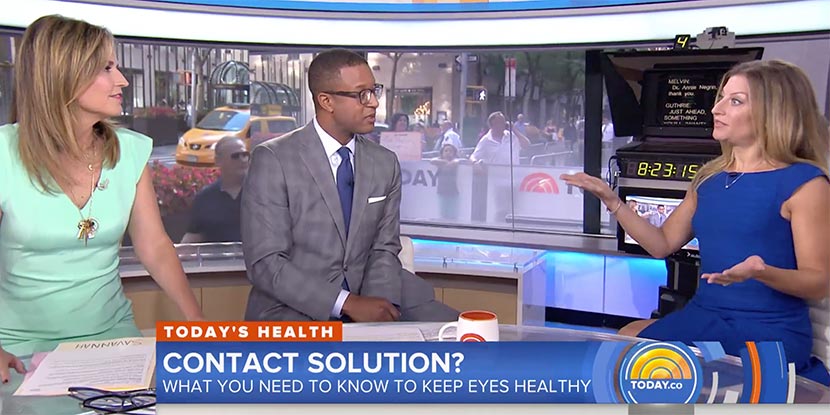Contact Lens Rule Changes

Ophthalmologist Annie Negrin, MD, right, on the Today Show, discussing contact lens safety.
The Federal Trade Commission in May unveiled a revised proposal to change the longstanding Contact Lens Rule governing prescriptions and sales. The new version differs from the one that the FTC proposed in 2016, which the Academy opposed. Still, it doesn’t relieve practitioners from a new, burdensome three-year requirement to keep records proving that they provided patients with their prescriptions.
In a departure from the 2016 iteration, the FTC attempted to respond to our burden argument by proposing a variety of new pathways for prescribers to confirm and record prescriptions’ release.
The Academy will continue to speak out against required prescription acknowledgement forms.
This is the latest development of a process the FTC began in 2015 when it launched its first review of the Contact Lens Rule since it was established. The agency is seeking a policy that better reflects today’s market, which has evolved significantly over the last 20 years.
Under the FTC’s new proposal, confirmation that a patient has received a contact lens prescription can occur in one of several ways:
- Requesting that the patient acknowledge receipt of the prescription by signing a separate confirmation statement
- Requesting that the patient sign a prescriber-retained copy of the prescription that contains a statement confirming the patient has received it
- Requesting that the patient sign a prescriber-retained copy of the sales receipt for the examination that contains a statement confirming the patient received the prescription
- Providing the patient with a digital copy of the prescription and retaining evidence that it was sent and received or made accessible, downloadable and printable
Prescribers would have to maintain evidence that they satisfied the Confirmation of Prescription Release requirement for at least three years. The proposal also includes a new exemption for prescribers who do not have a financial interest in contact lens sales. For example, ophthalmologists who do not sell contact lenses out of their practice would not be subject to these requirements.
In response to the Academy’s complaint about robocalls, several of the FTC’s other proposed changes would place a greater onus on contact lens sellers. These changes include new parameters for automated telephone prescription verification requests. For example, the FTC is setting clear requirements for what you hear from a seller’s robocall, along with how clearly this message is delivered.
The FTC was considering a proposal that would have given prescribers as few as eight business hours to provide patients with additional copies of their contact lens prescriptions. The Academy viewed this as potentially burdensome. We strongly advocated for more time for prescribers. Specifically, the Academy recommended the minimum time period of 40-business hours that was adopted in the agency’s latest proposal.
The Academy will continue to review and comment on the proposed changes to the Contact Lens Rule as part of our federal advocacy against administrative burdens and for patient safety improvements.